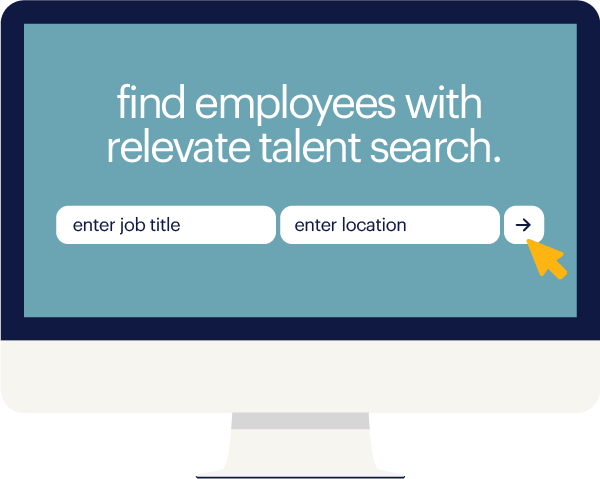Efficiency is the lodestar of modern business operations — and it has been since at least the publication of Frederick Winslow Taylor's Principles of Scientific Management in 1911. And while Taylor's goal was formulated more than a century ago, it still sounds familiar today: to identify the "one best way" of doing things on the job. In other words, Taylor wanted best practices.
Yet, for all of Taylor's enthusiasm about objective tools for measurement, when your organization starts to lose efficiency, it often takes on a tangible quality for leadership. Often, that is, you can feel it well before you see it, no matter how KPIs at your company get tabulated.
So, before the numbers tell the story, what are some of the most common root causes for productivity suddenly lagging at businesses today? And what can you do about them? Read on to find out.
your labor costs are too high
First things first: What are labor inefficiencies, exactly?
A standard definition would be "the number of labor hours required to accomplish a given task, when compared to the standard in that industry or setting." What's more important, for our purposes, is knowing that labor inefficiencies constitute a continual blight on the balance sheets of organizations across all industries today.
That said, the problem is far more pronounced, and has more significant bottom-line consequences, in some sectors than in others — healthcare being a case in point. Hospitals and health systems right now are spending, on average, anywhere from 40 to 55 percent of their total operating costs on labor, which is far above the standard from other industries. (In retail, by comparison, the figure is in the ballpark of 10 to 20 percent.)
|
So if you're reeling from labor inefficiencies, what can you do about it? For starters, consider bringing in an outsider's perspective — someone with the expertise, experience and knowledge of best practices to effectively spearhead the change you need. This is the kind of large-scale business challenge that onsite experts are uniquely qualified to solve. Trust us, change isn't easy — especially when you attempt to go it alone. But with partners on board to connect it to ROI (in some cases as much as $500,000 annually or more), you should be able to avoid that headache and stay focused on business growth.
your managers aren't empowered with data
For years now, organizations have been diligently embarking on digital transformation efforts. Their shared goal? To create closed feedback loops that ensure managers and other leaders are able not only to collect granular performance data, but then leverage it in ways that inform strategic decisions going forward.
Unfortunately, a lot of the time, that's not what happens. Take this recent study, for example, which found that while virtually all leaders (91%) want to use data to make decisions, only slightly more than half (57%) are actually doing so.
Why? In part, it's the old story: People are always resistant to change. But there are other causes to consider as well. For example, if managers are evaluated more on the basis of outcomes than for the processes or methodologies that got them there, "business as usual" gets covertly incentivized as a result.
That's why, if you're seeing efficiency suffer at your company and suspect that data is the culprit, it's critical to take action right away. A smart start is to survey both leaders and employees to get a sense of how your business actually operates — in practice, not in theory — right now.
Ask yourself: Are leaders getting the right data? Are they using it? Why or why not? Is the data actionable?
Answers to these questions should give you a good idea of where to begin. Ultimately, whatever the exact root cause, if leaders aren't actively leveraging data in decision-making, that's a problem — and the alarm bells should sound. But by attacking gaps and addressing discrepancies, you can be on the road to some major improvements.
your employees are disengaging
Efficiency, engagement and productivity: intuitively, it's a triad that certainly seems to makes sense. After all, when people feel strongly connected to what they're doing — in almost any context, from raising a kid to manning a forklift — you expect to see a greater commitment to achieving shared outcomes. And that's certainly something the latest Gallup polls support as well: Companies with higher rates of engagement also report as much as 21 percent greater productivity.
|
So the connection between employee engagement and performance (which is to say, efficiency) is not only obvious, but almost impossible to overstate. Yet there's also a lot of evidence to suggest that more could be done to keep employees engaged — and it all starts with onboarding.
Right now, in industries like manufacturing and logistics, for starters, a whopping 32 percent of candidates say they received no onboarding at all. (And if you count your organization among them, you've got your work cut out for you.) Moreover, only a paltry 12 percent of employees today strongly agree that their organizations do a good job of onboarding, according to the latest Gallup poll — which means the other 88 percent feel strongly otherwise.
Clearly that's a problem. But one simple fix is to mandate new-hire checklists for all functions across your organization. Doing so will help ensure you're taking a consistent approach to onboarding, and that all people leaders across the company are, well, on board. Just make sure you coordinate and communicate with relevant leadership ahead of time, because you'll need everyone to buy in.
key takeaways
We've come a long way in the century-plus since Taylor's seminal publication. But of course, then as now, when efficiency is the problem, you need to take decisive action before it starts eating into your margins on the balance sheet.
To learn more about these and other workforce management challenges, just go to Randstad's complete workforce management learning center. It's got everything you need to start moving the needle today.









